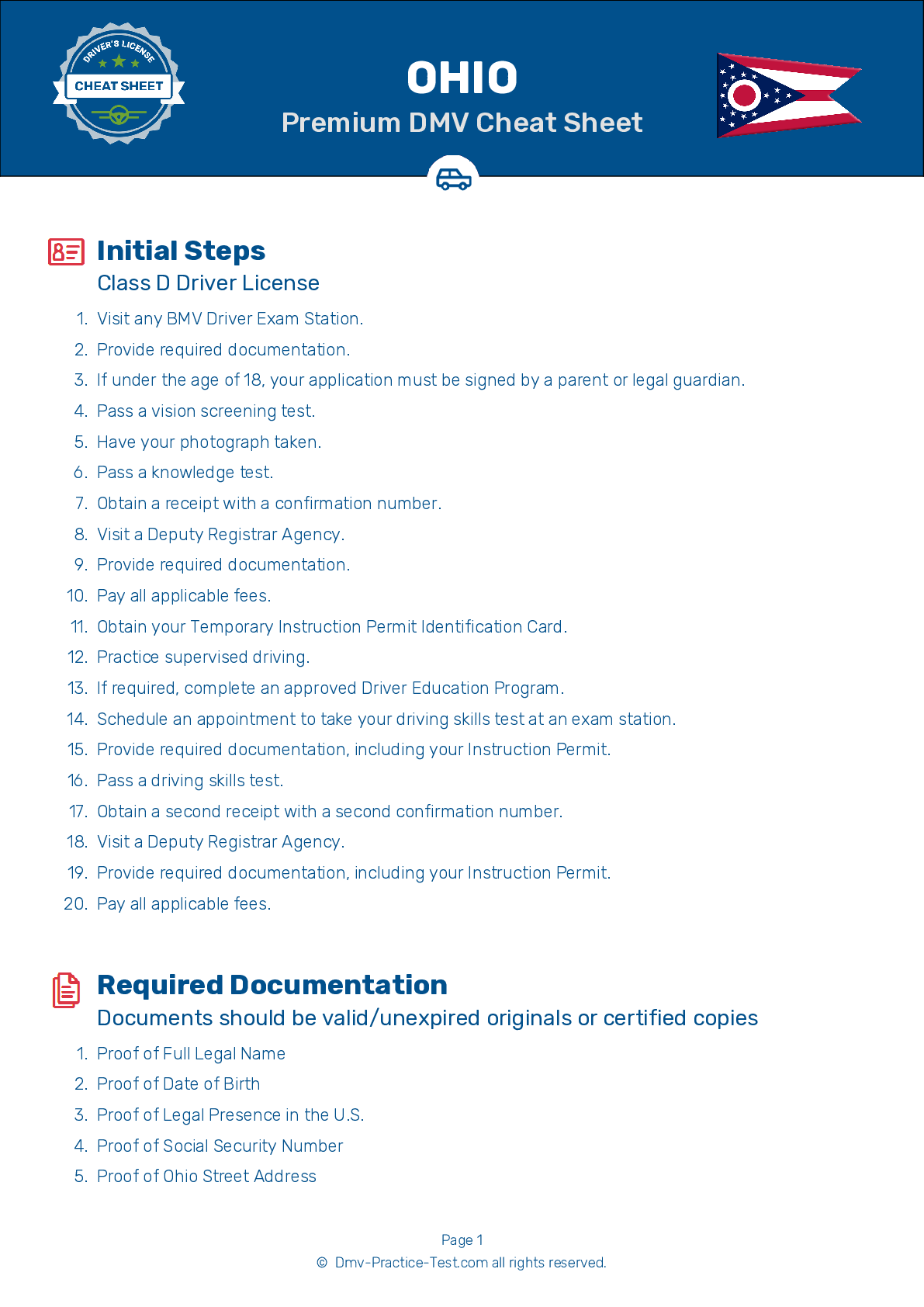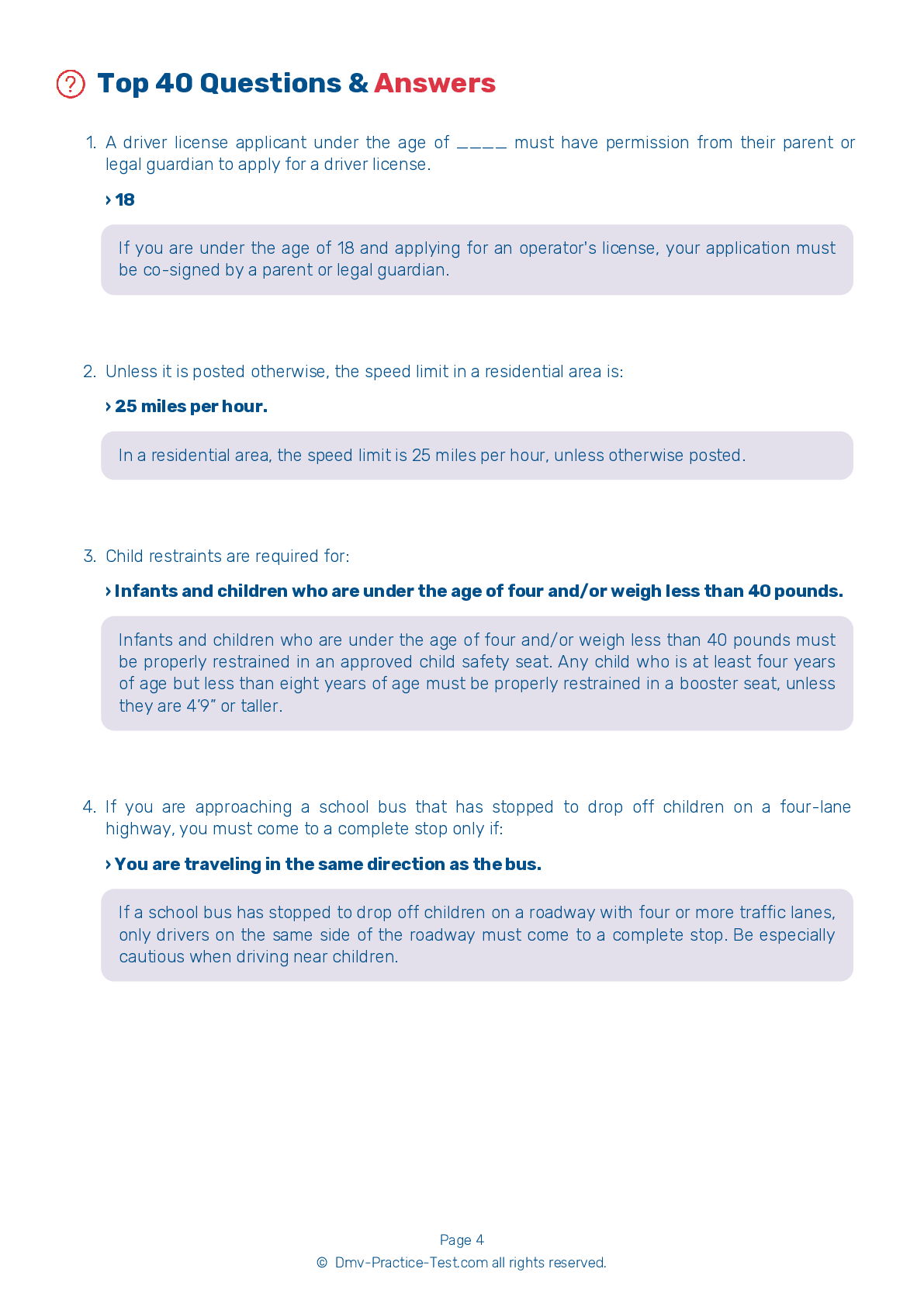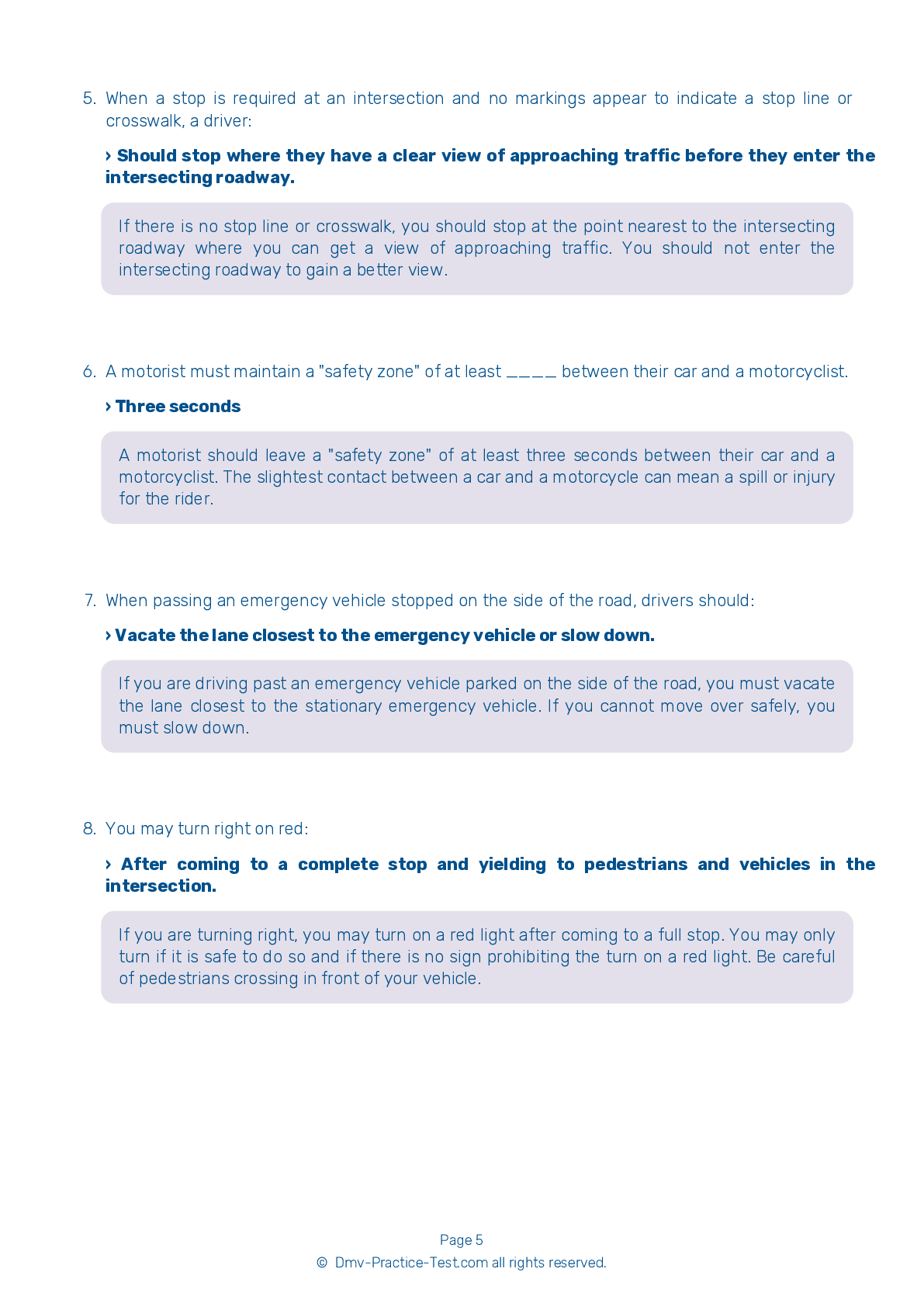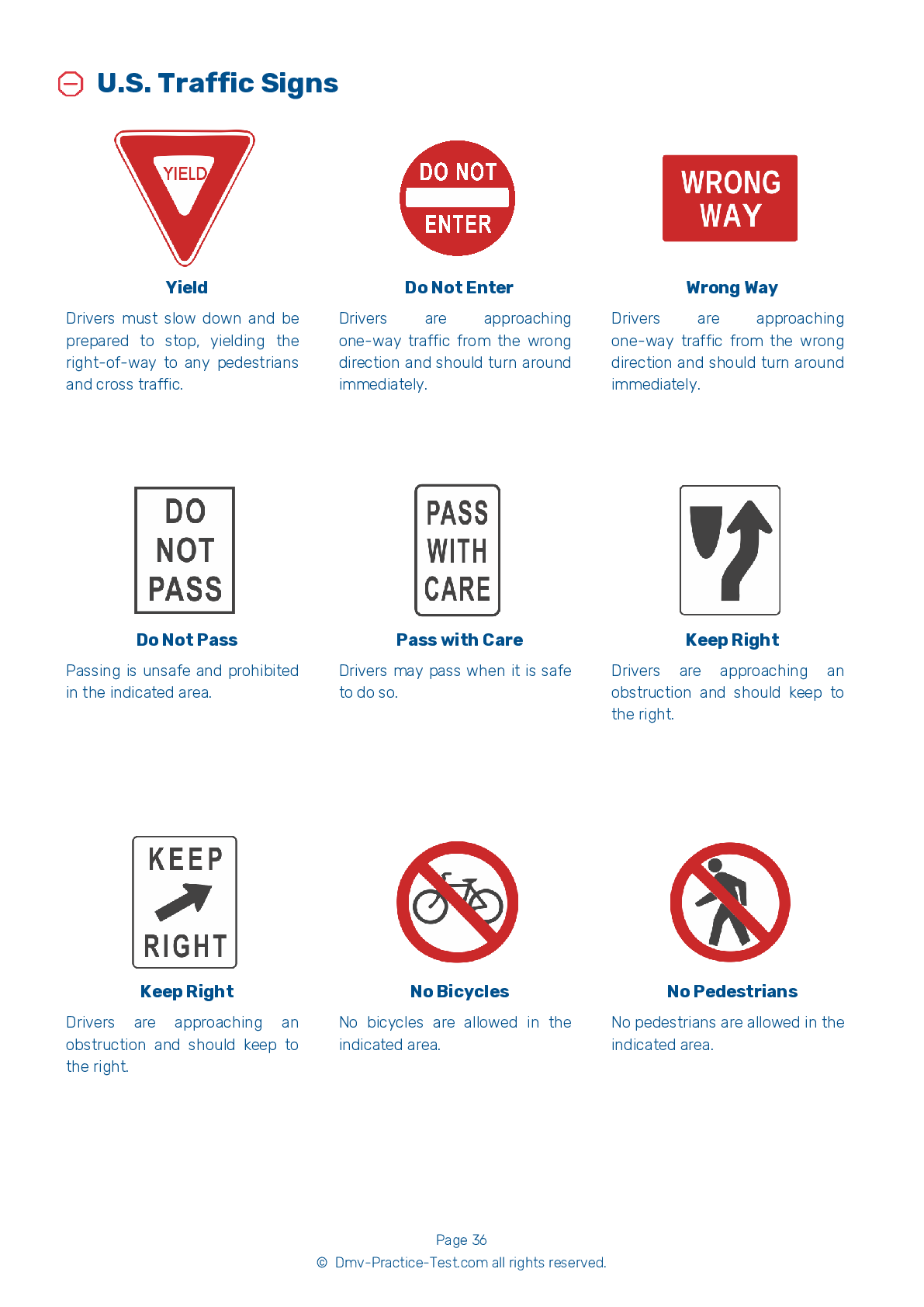FREE Ohio DMV Practice Test #2 Page 5 of 5
The practise exams for Ohio's DMV have been revised for January 2025. It comprises questions based on the most important traffic signals and laws for 2025 from the Ohio Driver Handbook. To study for the DMV driving permit test and driver's licence exam, use actual questions that are very similar (often identical!) to the DMV driving permit test and driver's licence exam.
Each question on the practise exam has a tip and explanation to help you recall the ideas. Questions about traffic rules, traffic signs, and driving statutes, as well as knowledge from the Driver Handbook, will be included in the written portion of the official Ohio DMV test.
You must properly answer 35 of the 40 questions to receive a passing mark. To help you prepare for your instruction permit or driver's licence, take this practise test from the Ohio Department of Motor Vehicles.
The DMV exam is offered in a variety of languages.
Using any form of testing help will result in an automatic fail, and the DMV may take further action against your driver's licence, so avoid it.
33 . A fully loaded tractor-trailer traveling at 55 mph could take up to ____ to come to a complete stop.
Tractor-trailers take longer distances to stop than smaller cars traveling at the same speed. A fully loaded tractor-trailer may take almost 400 feet to come to a complete stop when driving at 55 mph.
34 . If your turn signals fail, you should use ____ to indicate that you are turning.
If your vehicle's turn signals do not work, you should use hand signals to indicate when you intend to change direction.
35 . You are driving on a busy street and your vehicle’s accelerator sticks open. You should:
If your vehicle’s accelerator sticks open, your vehicle will continue to maintain its speed or accelerate, even if you remove your foot from the gas pedal. Turn off the ignition, using care to move the ignition switch only far enough to stop the engine and not engage the steering wheel locking mechanism. Apply your brakes and move off the road to a safe area.
36 . This sign shows one type of:
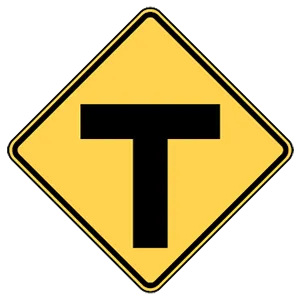
This sign indicates that a T intersection is ahead.
37 . When stopped for a traffic violation or at an equipment check, the driver must produce:
When stopped for a traffic violation or at an equipment check, the driver is responsible for producing their license, proof of registration, and proof of insurance. Drivers are required to have all three of these documents in a vehicle when it is being driven.
38 . A red flashing traffic light has the same meaning as a:
A red flashing traffic signal has the same meaning as a stop sign. When approaching a red flashing signal, come to a complete stop and proceed when it is safe to do so. A stop sign may sometimes also be posted where this signal is located.
39 . This sign means:
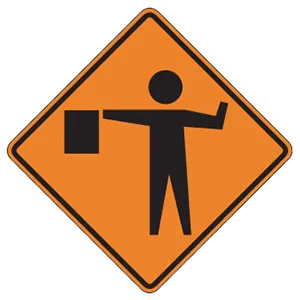
This sign indicates that there is a flagger ahead controlling traffic in a construction area.
40 . Stress can affect your driving by:
Emotions can have a great effect on your driving ability. You may not be able to drive well if you are overly worried, excited, afraid, angry, or sad. Stress can lessen your concentration on the task of driving. It is better to wait to drive than to risk driving while you are emotionally unstable.
Need Car Insurance? No problem!
Compare the best rates in Ohio and find a personalized policy that meets your needs.
1. Are You Currently insured ?
2. Married ?
3. Do you own your Home?
4. Do you have more than 1 car ?
5. Have you or a Family Member Honorably Served in U.S. Military ?
6. Your Name
7. Age
8. Zip code
IMPORTANT REMINDER:Auto Insurance is Mandatory to drive in Ohio. Get covered before you hit the road to avoid any fines.
Ranked by best match
